Introduction
Mid-century modern decor is known for its timeless appeal, sleek lines, and minimalistic elegance. But what makes this style truly shine is its ability to incorporate natural elements—wood, stone, plants, and earthy tones—into the design. This connection to nature is a key feature of mid-century modern aesthetics, creating spaces that feel warm, balanced, and inviting.
I’ve always been drawn to the organic feel of mid-century modern decor. My first experiment with this style was in my living room, where I combined a walnut credenza with lush greenery and a stone coffee table. The result was stunning—a harmonious mix of man-made design and natural beauty. Since then, I’ve been obsessed with layering natural elements into mid-century spaces, both in my home and for clients.
What I’ve learned is that mixing natural elements into mid-century modern decor isn’t just about adding a few plants here and there. It’s about creating a balance where the clean lines of the furniture complement the organic shapes and textures of nature. In this post, I’ll show you how to do just that. Whether you’re starting from scratch or looking to refresh your space, these tips will help you seamlessly integrate natural elements into your mid-century modern home.
Why Natural Elements Are Essential to Mid-Century Modern Decor
1. Rooted in Nature
Mid-century modern design emerged in the 1950s and 60s, a time when architecture and interiors aimed to blend indoor and outdoor spaces. This philosophy emphasized natural materials and an organic connection to the environment.
2. Warmth and Texture
While mid-century furniture often features clean, sharp lines, natural elements like wood and stone add warmth and softness to balance the design.
3. Timeless Appeal
Natural materials like wood, leather, and stone age beautifully, making them a perfect match for the timeless quality of mid-century modern furniture.
How to Mix Natural Elements into Mid-Century Modern Decor
1. Incorporate Wood as a Primary Material
Wood is the backbone of mid-century modern design, and using it thoughtfully can enhance the natural feel of your space.
- Walnut, Teak, and Oak: These warm-toned woods are iconic in mid-century furniture. Look for credenzas, coffee tables, and chairs made from these materials.
- Layered Wood Finishes: Pair darker walnut furniture with lighter oak flooring or shelving for a balanced look.
- Accent Walls: Add texture and warmth by incorporating a wooden accent wall made of slats or reclaimed wood.
2. Bring in Stone and Concrete
Natural stone and concrete create a grounding, tactile element in mid-century spaces.
- Fireplaces: If you have a stone or brick fireplace, let it be a focal point by keeping the surrounding decor minimal.
- Coffee Tables and Side Tables: Opt for tables with stone tops, such as marble, travertine, or quartz.
- Concrete Planters: Use concrete planters to house greenery for a modern, industrial touch.
3. Add Greenery and Plants
Plants are a simple yet impactful way to bring natural elements into your space.
- Statement Plants: Large plants like fiddle leaf figs, rubber trees, or monstera are perfect for filling empty corners.
- Small Accents: Place smaller plants like succulents or snake plants on shelves, side tables, or nightstands.
- Retro Planters: Use mid-century-inspired planters with clean lines or tapered legs to keep the look cohesive.
4. Use Leather and Natural Textiles
Incorporating leather and natural fibers adds warmth and texture to your decor.
- Leather Seating: Choose sofas or chairs in rich leather tones like caramel, cognac, or tan.
- Textiles: Add wool or cotton throws and rugs in earthy tones to complement your furniture.
- Jute or Sisal Rugs: Natural fiber rugs provide a neutral base with plenty of texture.
5. Balance with Earthy Colors
Mid-century modern decor often includes neutral and earthy colors inspired by nature.
- Earthy Tones: Incorporate shades of olive green, mustard yellow, rust, and burnt orange.
- Accent Walls: Paint an accent wall in a deep green or warm brown for a nature-inspired touch.
- Accessories: Use pillows, artwork, or vases in these colors to tie the look together.
6. Choose Organic Shapes
Natural elements aren’t just about materials—they’re also about form.
- Curved Furniture: Look for chairs or sofas with rounded edges or soft curves.
- Geometric Accessories: Incorporate items like round mirrors, pebble-shaped tables, or abstract artwork.
- Decorative Stones: Add bowls or trays with smooth river stones or crystals for a tactile element.
7. Layer with Natural Light
Light is a natural element that can dramatically enhance your mid-century space.
- Large Windows: Maximize natural light by using sheer curtains or leaving windows bare.
- Skylights: If possible, add skylights to create a strong connection to the outdoors.
- Lighting Fixtures: Use mid-century-inspired lamps with wood or rattan bases to amplify the natural vibe.
8. Integrate Woven and Cane Elements
Woven textures bring an organic, handcrafted feel to mid-century modern decor.
- Cane Furniture: Chairs, cabinets, or headboards with cane details add a vintage touch.
- Rattan Accents: Use rattan baskets, light fixtures, or planters to incorporate natural texture.
- Wicker Chairs: Place a wicker armchair in a reading nook or living room corner.
Picture Gallery
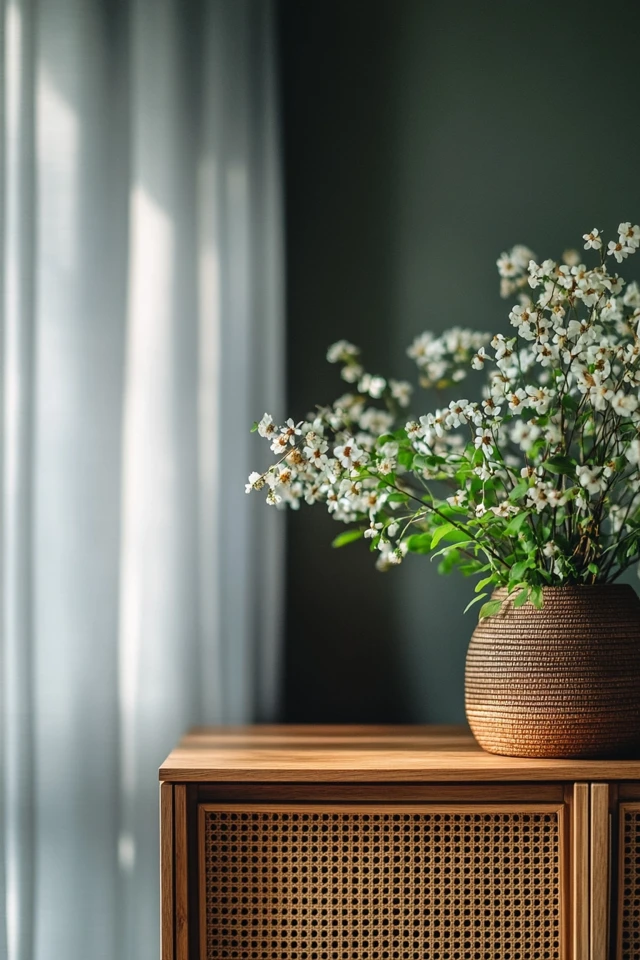
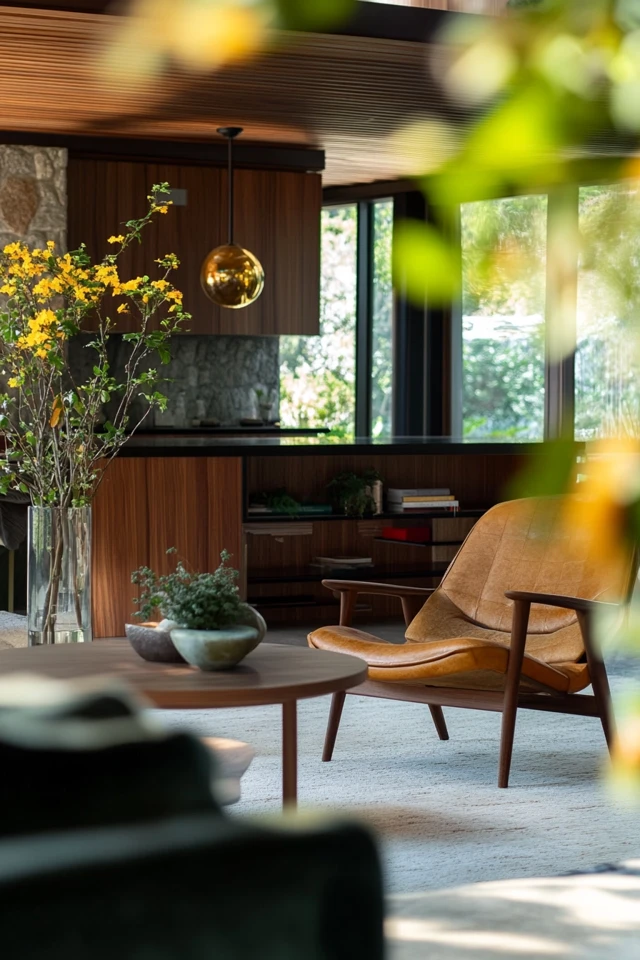
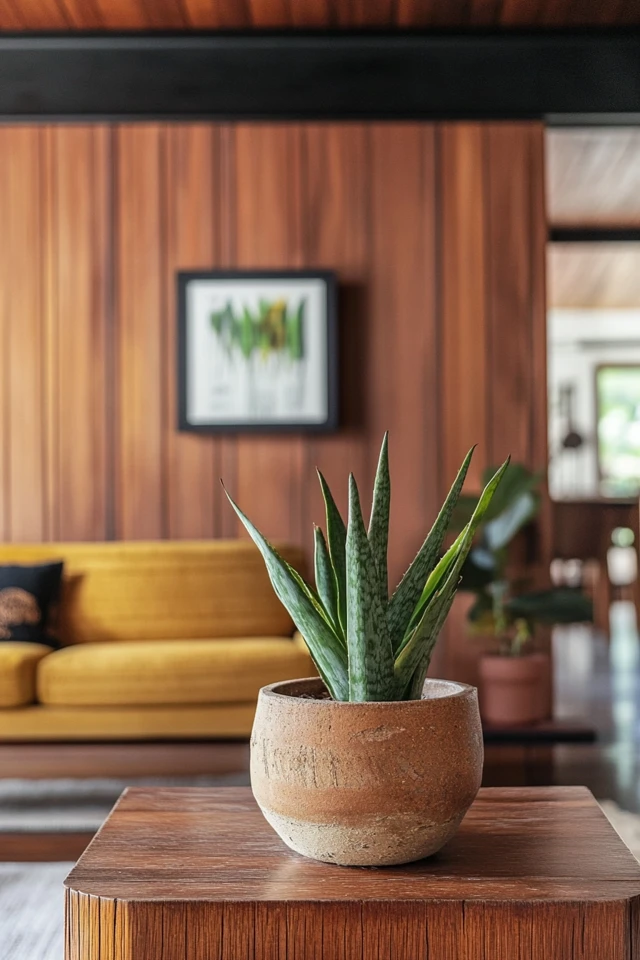
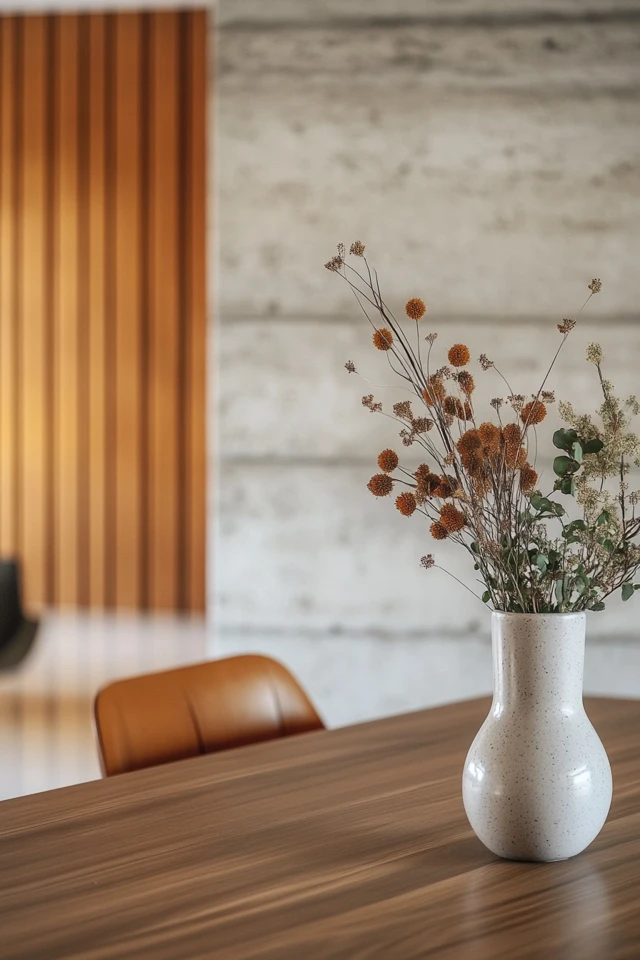



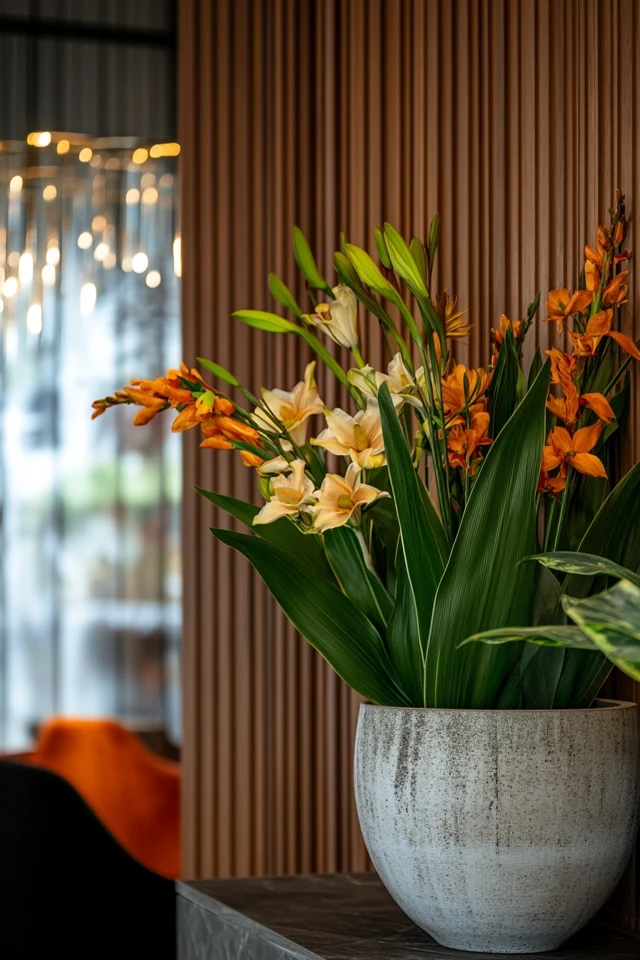
Tips for Achieving Balance
1. Don’t Overdo It
Natural elements should complement mid-century furniture, not compete with it. Avoid overcrowding your space with too many textures or materials.
2. Stick to a Cohesive Palette
Choose a consistent color palette inspired by nature, such as warm browns, greens, and neutral tones.
3. Embrace Minimalism
Mid-century modern decor thrives on simplicity. Use natural elements sparingly and purposefully to maintain a clean, uncluttered look.
Conclusion
Mixing natural elements into mid-century modern decor is all about creating a harmonious blend of sleek design and organic beauty. By incorporating wood, stone, plants, and textiles, you can transform your space into a warm, inviting retreat that feels connected to nature.
I’ve seen how these elements can transform a home—not just aesthetically, but emotionally. A room with natural touches feels grounded and calming, a place where you can truly unwind. Whether you’re adding a teak coffee table, a statement plant, or a woven light fixture, these details make all the difference.
So, take a look around your space. Where can you introduce a touch of nature? With these tips, you’ll soon have a mid-century modern home that’s timeless, stylish, and beautifully in tune with the world around it.
FAQ
What are the best types of wood for mid-century modern decor?
Walnut, teak, and oak are the most popular choices for their warm tones and durability.
How can I add natural elements to a small space?
Start with small plants, a woven basket, or a jute rug. Choose multi-functional furniture like a wooden bench with built-in storage.
Can I mix different natural materials in one room?
Yes! Mix materials like wood, stone, and leather, but keep the color palette cohesive to avoid visual clutter.
What types of plants work best in mid-century modern spaces?
Fiddle leaf figs, rubber trees, monstera, snake plants, and succulents all complement the clean lines of mid-century decor.
Are there budget-friendly ways to incorporate natural elements?
Absolutely! Shop for vintage wood furniture, use affordable planters for greenery, and look for natural fiber rugs at budget-friendly retailers like IKEA or Target.


